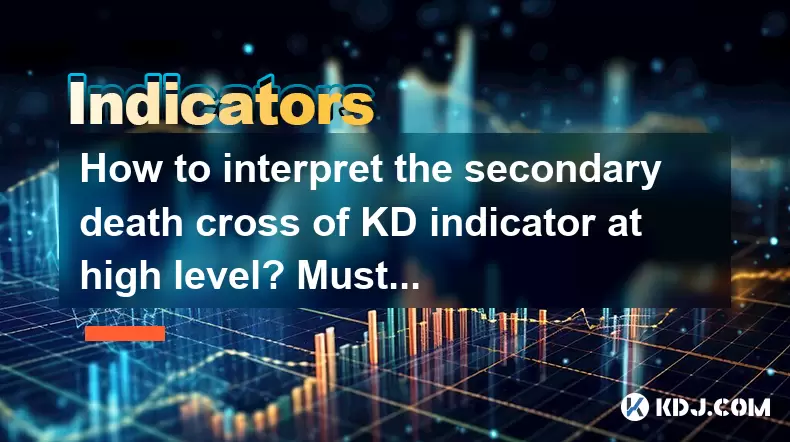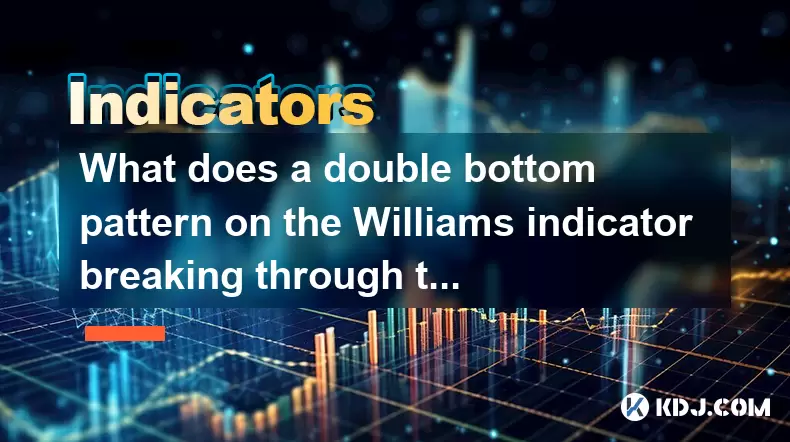-
 Bitcoin
Bitcoin $116400
-0.36% -
 Ethereum
Ethereum $4033
3.40% -
 XRP
XRP $3.302
-1.26% -
 Tether USDt
Tether USDt $1.000
-0.02% -
 BNB
BNB $796.1
1.67% -
 Solana
Solana $177.8
1.89% -
 USDC
USDC $0.9999
0.00% -
 Dogecoin
Dogecoin $0.2314
4.09% -
 TRON
TRON $0.3381
0.14% -
 Cardano
Cardano $0.7989
1.22% -
 Stellar
Stellar $0.4496
-1.84% -
 Chainlink
Chainlink $20.42
9.42% -
 Hyperliquid
Hyperliquid $41.17
0.88% -
 Sui
Sui $3.914
3.77% -
 Bitcoin Cash
Bitcoin Cash $584.7
1.52% -
 Hedera
Hedera $0.2632
-0.54% -
 Avalanche
Avalanche $24.09
3.40% -
 Ethena USDe
Ethena USDe $1.001
-0.02% -
 Litecoin
Litecoin $123.2
1.33% -
 Toncoin
Toncoin $3.318
-0.04% -
 UNUS SED LEO
UNUS SED LEO $8.984
-0.05% -
 Shiba Inu
Shiba Inu $0.00001323
2.85% -
 Uniswap
Uniswap $10.90
4.41% -
 Polkadot
Polkadot $3.999
3.34% -
 Dai
Dai $1.000
0.01% -
 Cronos
Cronos $0.1630
9.64% -
 Bitget Token
Bitget Token $4.484
0.82% -
 Monero
Monero $272.4
2.44% -
 Pepe
Pepe $0.00001173
6.03% -
 Aave
Aave $290.8
2.88%
How to interpret the secondary death cross of KD indicator at high level? Must I leave the market?
The secondary death cross of the KD indicator at high levels signals potential bearish trends, but exiting the market depends on various factors like risk tolerance and portfolio diversification.
Jun 02, 2025 at 01:00 pm

Understanding the secondary death cross of the KD indicator, particularly when it occurs at high levels, is crucial for making informed trading decisions in the cryptocurrency market. The KD indicator, also known as the Stochastic Oscillator, is a momentum indicator that compares a closing price of a cryptocurrency to its price range over a certain period of time. The secondary death cross in the KD indicator is a specific signal that traders use to identify potential bearish trends. However, the question of whether to exit the market entirely based on this signal is complex and depends on various factors.
What is the KD Indicator?
The KD Indicator, or Stochastic Oscillator, is used to generate overbought and oversold trading signals. It consists of two lines: the %K line and the %D line. The %K line is calculated as follows:
[ \text{%K} = \frac{\text{Current Close} - \text{Lowest Low}}{\text{Highest High} - \text{Lowest Low}} \times 100 ]
The %D line is a simple moving average of the %K line, typically over three periods. When the %K line crosses below the %D line, it is known as a death cross, indicating potential bearish momentum. A secondary death cross occurs when the %K line, after initially crossing below the %D line, crosses back above it only to cross below again. This pattern suggests a stronger bearish signal.
Identifying the Secondary Death Cross at High Levels
When the secondary death cross occurs at high levels, it is particularly significant. High levels in the context of the KD indicator typically mean that the indicator is above 80, indicating overbought conditions. Here's how to identify this pattern:
- Monitor the KD Indicator: Ensure that the KD indicator is set up on your trading platform. Most platforms have this as a default indicator.
- Track the %K and %D Lines: Observe the %K and %D lines closely. Note when the %K line initially crosses below the %D line, signaling the first death cross.
- Watch for a Rebound: After the first death cross, wait for the %K line to cross back above the %D line, indicating a potential false alarm or a short-lived bullish trend.
- Confirm the Secondary Death Cross: Finally, confirm the secondary death cross when the %K line crosses below the %D line again, especially if this occurs while the indicator is still above 80.
Interpreting the Secondary Death Cross at High Levels
Interpreting the secondary death cross at high levels involves understanding its implications for market trends. When this pattern occurs at high levels, it suggests that:
- The market may be overbought: The high levels indicate that the cryptocurrency has been trading near the top of its recent range, which may not be sustainable.
- Bearish momentum is increasing: The secondary death cross reinforces the bearish signal, suggesting that downward momentum is gaining strength.
- A potential reversal is imminent: This pattern often precedes a significant price drop, as the market corrects from overbought conditions.
Should You Leave the Market?
The decision to leave the market entirely based on the secondary death cross at high levels is not straightforward. Here are some considerations:
- Risk Tolerance: If you have a low risk tolerance, the secondary death cross at high levels might be a signal to reduce your exposure to the market.
- Portfolio Diversification: If your portfolio is diversified across different cryptocurrencies, you might not need to exit the market entirely but can adjust your positions.
- Other Indicators: Always consider other technical indicators and fundamental analysis. The secondary death cross is just one piece of the puzzle.
- Trading Strategy: If you are a long-term investor, you might choose to hold through the bearish signal, especially if you believe in the long-term potential of the cryptocurrency.
How to React to the Secondary Death Cross
Reacting to the secondary death cross at high levels involves several steps:
- Review Your Position: Assess your current holdings and consider if you are comfortable with the potential downside risk.
- Consider Hedging: If you decide not to exit the market, consider hedging strategies such as buying put options or short-selling a portion of your holdings.
- Set Stop-Loss Orders: Implement stop-loss orders to limit potential losses if the price drops significantly.
- Monitor Market Conditions: Keep a close eye on other market indicators and news that could affect the price of the cryptocurrency.
Using the Secondary Death Cross in Conjunction with Other Indicators
To make more informed decisions, it's essential to use the secondary death cross in conjunction with other technical indicators. Here are some examples:
- Moving Averages: Confirm the bearish signal with a bearish crossover of moving averages, such as the 50-day moving average crossing below the 200-day moving average.
- Relative Strength Index (RSI): If the RSI is also indicating overbought conditions (above 70), it strengthens the bearish signal from the secondary death cross.
- Volume: High trading volume during the secondary death cross can indicate strong bearish momentum, increasing the likelihood of a price drop.
Frequently Asked Questions
Q: Can the secondary death cross be a false signal?
A: Yes, like all technical indicators, the secondary death cross can produce false signals. It's essential to use it in conjunction with other indicators and market analysis to increase its reliability.
Q: How often does the secondary death cross occur at high levels?
A: The frequency of the secondary death cross at high levels depends on market volatility and the specific cryptocurrency. In highly volatile markets, it may occur more frequently than in stable markets.
Q: Should I use the secondary death cross for short-term or long-term trading?
A: The secondary death cross can be used for both short-term and long-term trading, but it is more commonly used for short-term trading due to its sensitivity to price movements.
Q: Is the secondary death cross more reliable in certain market conditions?
A: The secondary death cross tends to be more reliable in trending markets, where clear bullish or bearish trends are established, rather than in sideways or choppy markets.
Disclaimer:info@kdj.com
The information provided is not trading advice. kdj.com does not assume any responsibility for any investments made based on the information provided in this article. Cryptocurrencies are highly volatile and it is highly recommended that you invest with caution after thorough research!
If you believe that the content used on this website infringes your copyright, please contact us immediately (info@kdj.com) and we will delete it promptly.
- HAT Token Mania: Price Surges, Crypto Auctions, and Meme Coin Mayhem
- 2025-08-09 11:10:11
- Undervalued Cryptos Primed for a 2025 Takeoff: MAGACOIN, TRX, and SUI Lead the Pack
- 2025-08-09 11:10:11
- Bitcoin Goes to Harvard: Ivy League Embraces Digital Assets
- 2025-08-09 10:50:12
- Bitcoin, BlockDAG, and Toncoin: Decoding the Crypto Buzz in NYC
- 2025-08-09 11:30:11
- XRP, Pi Network, and Binance Listing Buzz: What's the Hype?
- 2025-08-09 11:30:11
- Arctic Pablo Coin: The Meme Coin Presale Promising High ROI in Q3 2025
- 2025-08-09 10:50:12
Related knowledge

What does it mean when the Triple Moving Average (TRIX) turns downward but the price doesn't fall?
Aug 09,2025 at 12:42pm
Understanding the Triple Moving Average (TRIX) IndicatorThe Triple Moving Average, commonly known as TRIX, is a momentum oscillator designed to filter...

What does it mean when the Williams' oscillator repeatedly hits bottoms but fails to rebound?
Aug 09,2025 at 09:28am
Understanding the Williams %R OscillatorThe Williams %R oscillator, developed by Larry Williams, is a momentum indicator used in technical analysis to...

What does a double bottom pattern on the Williams indicator breaking through the 50-day midline indicate?
Aug 09,2025 at 10:56am
Understanding the Williams %R IndicatorThe Williams %R indicator, developed by Larry Williams, is a momentum oscillator that measures overbought and o...

What does it mean when the MACD-histogram turns from green to red but the DIF line fails to form a golden cross?
Aug 09,2025 at 10:15am
Understanding the MACD and Its ComponentsThe MACD (Moving Average Convergence Divergence) is a widely used technical analysis tool in the cryptocurren...

When the J line in the KDJ indicator suddenly turns downward after being continuously overbought, does it indicate a top?
Aug 09,2025 at 06:35am
Understanding the KDJ Indicator and Its ComponentsThe KDJ indicator is a momentum oscillator widely used in cryptocurrency technical analysis to ident...

What does it mean when the TRIX indicator suddenly diverges downward after a long period of convergence?
Aug 09,2025 at 12:56am
Understanding the TRIX Indicator in Cryptocurrency TradingThe TRIX indicator, or Triple Exponential Average, is a momentum oscillator used in technica...

What does it mean when the Triple Moving Average (TRIX) turns downward but the price doesn't fall?
Aug 09,2025 at 12:42pm
Understanding the Triple Moving Average (TRIX) IndicatorThe Triple Moving Average, commonly known as TRIX, is a momentum oscillator designed to filter...

What does it mean when the Williams' oscillator repeatedly hits bottoms but fails to rebound?
Aug 09,2025 at 09:28am
Understanding the Williams %R OscillatorThe Williams %R oscillator, developed by Larry Williams, is a momentum indicator used in technical analysis to...

What does a double bottom pattern on the Williams indicator breaking through the 50-day midline indicate?
Aug 09,2025 at 10:56am
Understanding the Williams %R IndicatorThe Williams %R indicator, developed by Larry Williams, is a momentum oscillator that measures overbought and o...

What does it mean when the MACD-histogram turns from green to red but the DIF line fails to form a golden cross?
Aug 09,2025 at 10:15am
Understanding the MACD and Its ComponentsThe MACD (Moving Average Convergence Divergence) is a widely used technical analysis tool in the cryptocurren...

When the J line in the KDJ indicator suddenly turns downward after being continuously overbought, does it indicate a top?
Aug 09,2025 at 06:35am
Understanding the KDJ Indicator and Its ComponentsThe KDJ indicator is a momentum oscillator widely used in cryptocurrency technical analysis to ident...

What does it mean when the TRIX indicator suddenly diverges downward after a long period of convergence?
Aug 09,2025 at 12:56am
Understanding the TRIX Indicator in Cryptocurrency TradingThe TRIX indicator, or Triple Exponential Average, is a momentum oscillator used in technica...
See all articles

























































































